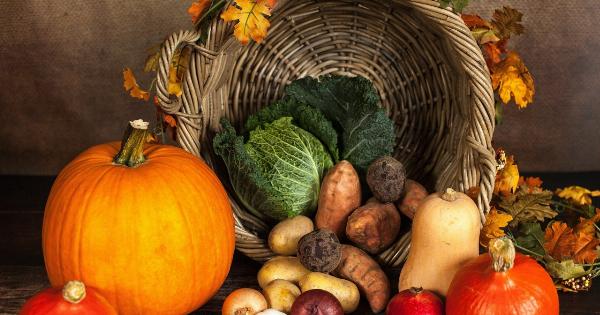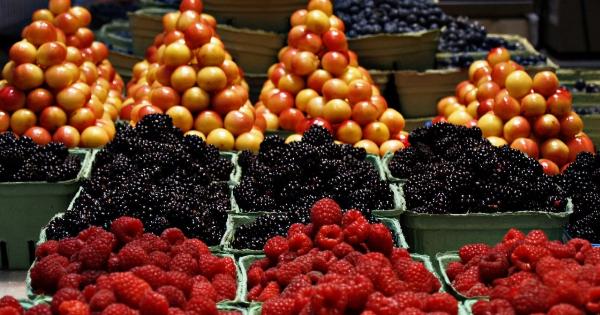Pesticides are chemicals that are applied to plants to control or eliminate pest infestations and improve crop yields.
However, they are also a potential health hazard, with exposure to pesticides linked to cancer, reproductive problems, and other health issues. Although there are safety regulations in place to limit pesticide use, residues still remain on some fruits and vegetables we consume. Here are 12 fruits and vegetables in the US that are known to have higher than normal pesticide levels.
1. Strawberries
Strawberries are a favorite fruit for many, but they are also highly susceptible to damage from pests and diseases. The fruit is often sprayed with pesticides before and after harvesting to protect it from pests such as mites, aphids, and thrips.
The US Environmental Protection Agency (EPA) has found that strawberries are one of the most contaminated fruits when it comes to pesticides, with up to 20 different pesticides detected on a single berry.
2. Spinach
Spinach is a leafy green vegetable that is loaded with vitamins and nutrients, but unfortunately, it is also loaded with pesticides.
Spinach is sprayed with a variety of insecticides and fungicides to protect it from pests and diseases like leaf spots and powdery mildew. These chemicals can stick to the leaves of spinach even after it has been washed, making it difficult to remove pesticide residues.
3. Kale
Kale has become increasingly popular in recent years due to its high nutrient content and health benefits, but it is also one of the most highly pesticide-contaminated vegetables.
Leafy greens like kale are often sprayed with pesticides to protect them from pests like aphids and whiteflies. The Environmental Working Group (EWG) found that kale samples had up to 18 different pesticide residues on them.
4. Nectarines
Nectarines, a close relative of peaches, are also highly susceptible to pest damage. They are susceptible to diseases like brown rot and bacterial spot, which can cause significant damage to the fruit.
In order to protect against these diseases and pests, nectarines are heavily sprayed with pesticides. The EWG found that nectarines had up to 15 different pesticide residues on them.
5. Apples
Apples are one of the most popular fruits in the US, but they are also one of the most heavily sprayed. Apple orchards are routinely sprayed with pesticides to protect against pests like apple maggots and codling moths.
The pesticides used on apples can stick to the skin of the fruit, making it difficult to wash off. The EWG found that apples had up to 4 different pesticide residues on them.
6. Grapes
Grapes are another fruit that is heavily sprayed with pesticides. They are susceptible to a variety of pests and diseases, including powdery mildew, downy mildew, and botrytis.
Grapes are often sprayed with fungicides, insecticides, and herbicides to protect against these pests and diseases. The EWG found that grapes had up to 5 different pesticide residues on them.
7. Peaches
Peaches are a juicy, flavorful fruit that is enjoyed by many, but they are also one of the most highly pesticide-contaminated fruits. Like nectarines, peaches are often sprayed with pesticides to protect against pests and diseases.
The EWG found that peaches had up to 22 different pesticide residues on them.
8. Cherries
Cherries are a sweet, delicious fruit that is high in vitamins and minerals, but they are also a fruit that is heavily sprayed with pesticides.
Cherries are susceptible to a variety of pests and diseases, including cherry fruit fly, which can cause significant damage to the fruit. To protect against these pests, cherries are often sprayed with a variety of insecticides and fungicides. The EWG found that cherries had up to 5 different pesticide residues on them.
9. Bell peppers
Bell peppers are a popular vegetable that is used in a variety of dishes, but they are also a vegetable that is heavily sprayed with pesticides.
Bell peppers are susceptible to a variety of pests and diseases, including bacterial leaf spot and pepper maggots. To protect against these pests, bell peppers are sprayed with a variety of insecticides and fungicides. The EWG found that bell peppers had up to 15 different pesticide residues on them.
10. Tomatoes
Tomatoes are a versatile and nutritious fruit that is used in a variety of dishes, but they are also a fruit that is heavily sprayed with pesticides.
Tomatoes are susceptible to a variety of pests and diseases, including tomato hornworms, aphids, and fungal diseases. To protect against these pests and diseases, tomatoes are often sprayed with a variety of insecticides and fungicides. The EWG found that tomatoes had up to 4 different pesticide residues on them.
11. Potatoes
Potatoes are a staple food in many households, but they are also a vegetable that is heavily sprayed with pesticides. Potatoes are susceptible to a variety of pests and diseases, including potato beetles and late blight.
To protect against these pests and diseases, potatoes are often sprayed with a variety of insecticides and fungicides. The EWG found that potatoes had up to 35 different pesticide residues on them.
12. Cucumbers
Cucumbers are a refreshing and crunchy vegetable that is enjoyed in salads and as a snack, but they are also a highly pesticide-contaminated vegetable.
Cucumbers are susceptible to a variety of pests and diseases, including downy mildew and bacterial wilt. To protect against these pests and diseases, cucumbers are sprayed with a variety of insecticides and fungicides. The EWG found that cucumbers had up to 86 different pesticide residues on them.
Conclusion
It is important to keep in mind that consuming these fruits and vegetables does not mean that you will automatically develop health issues related to pesticide exposure.
However, reducing your exposure to pesticides can reduce your risk of potential health problems. One way to do this is to buy organic produce whenever possible, as these foods are grown using fewer pesticides.
However, if organic produce is not accessible or affordable, try to wash fruits and vegetables thoroughly under running water before eating them or cooking with them.






























